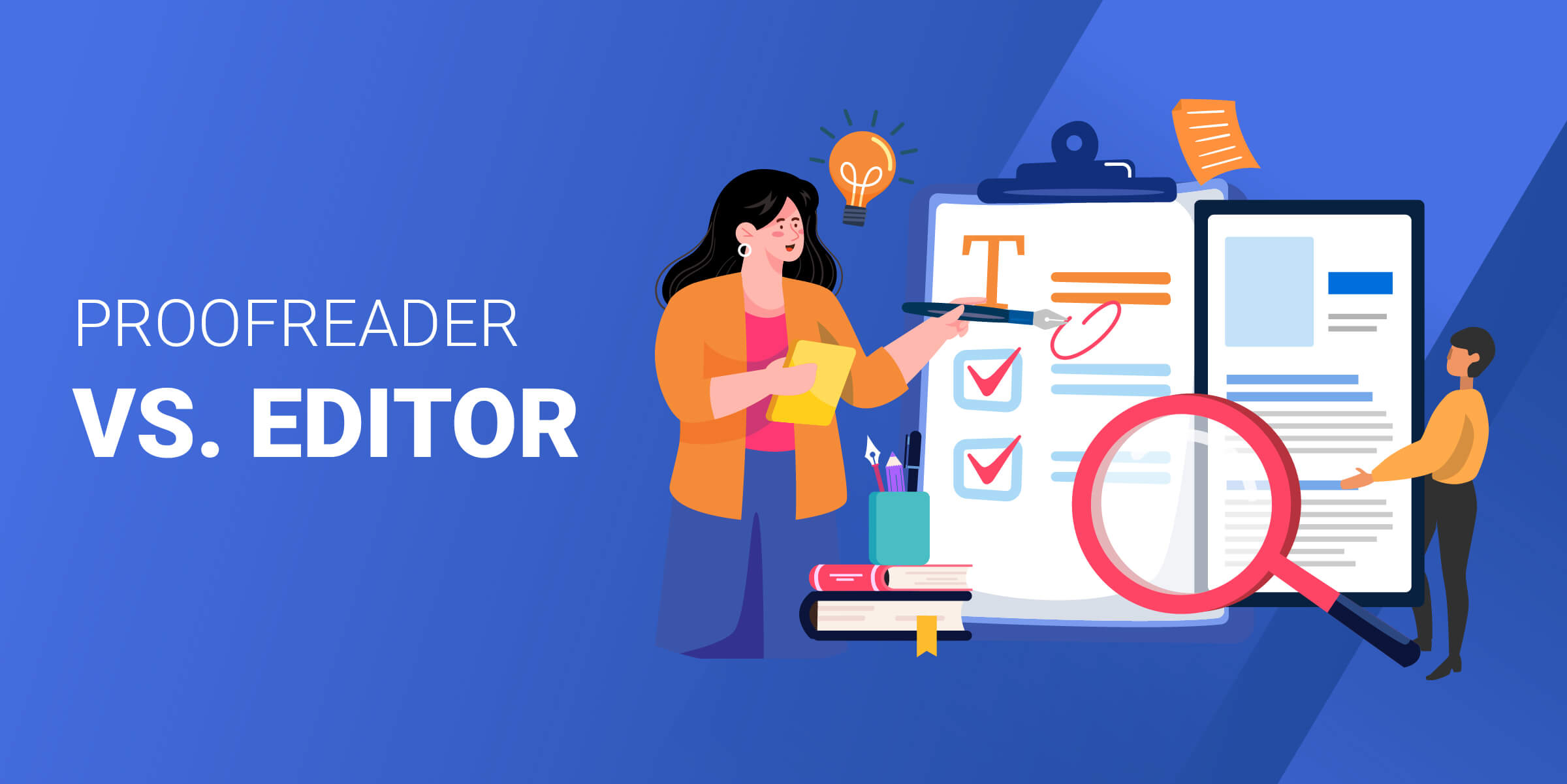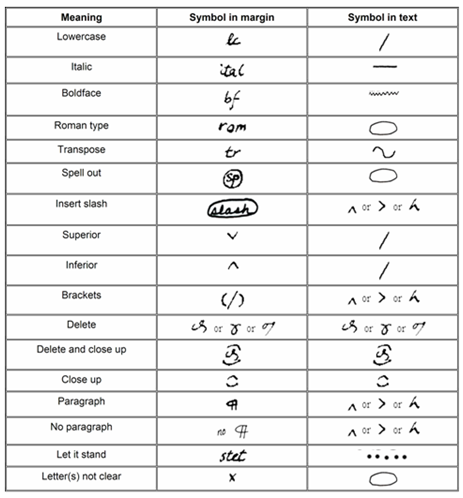“ChatGPT as Your AI Copy Editor and Proofreader: A Guide to Sharper, Error-Free Writing
Artikel Terkait ChatGPT as Your AI Copy Editor and Proofreader: A Guide to Sharper, Error-Free Writing
- Unleashing The Power Of ChatGPT For Writing Compelling Course Descriptions: A Guide For Educators
- Unleash Your Reel Potential: How To Create Engaging Reels Using ChatGPT
- Unleashing The Power Of ChatGPT: Crafting Killer User Personas With AI
- Unleashing The Power Of ChatGPT For Planning Digital Campaigns: A Comprehensive Guide
- Unleash The Power Of AI: ChatGPT Prompts For Startup Founders
Table of Content
Video tentang ChatGPT as Your AI Copy Editor and Proofreader: A Guide to Sharper, Error-Free Writing
ChatGPT as Your AI Copy Editor and Proofreader: A Guide to Sharper, Error-Free Writing

In today’s fast-paced world, content creation is paramount. Whether you’re crafting a blog post, writing a marketing email, or preparing a crucial report, the quality of your writing significantly impacts your message’s effectiveness. Errors, inconsistencies, and awkward phrasing can distract readers, damage your credibility, and ultimately undermine your goals. This is where ChatGPT, a powerful AI language model, can become an invaluable tool in your copyediting and proofreading arsenal.
While not a replacement for skilled human editors, ChatGPT offers a convenient and accessible way to enhance your writing, catch common errors, and improve clarity. This article will explore how ChatGPT can be used for copyediting and proofreading, highlighting its strengths, limitations, and providing practical tips for leveraging its capabilities effectively.
Understanding ChatGPT’s Role in Copyediting and Proofreading
ChatGPT is trained on a massive dataset of text and code, enabling it to understand and generate human-like text. This allows it to perform various copyediting and proofreading tasks, including:
- Grammar and Spelling Correction: Identifying and correcting grammatical errors, spelling mistakes, punctuation issues, and other basic language errors.
- Style and Tone Improvement: Suggesting alternative phrasing, improving sentence structure, and ensuring consistent tone and style throughout the text.
- Clarity and Conciseness Enhancement: Identifying and eliminating unnecessary words, simplifying complex sentences, and improving overall readability.
- Consistency Checks: Ensuring consistency in terminology, formatting, and style conventions.
- Fact-Checking (with caution): While not its primary function, ChatGPT can sometimes identify factual inaccuracies or inconsistencies (always verify with reliable sources).

How to Use ChatGPT for Copyediting and Proofreading: A Practical Guide
To effectively utilize ChatGPT for copyediting and proofreading, follow these steps:

Prepare Your Text: Ensure your text is formatted in a way that ChatGPT can easily process. Plain text or common file formats like .txt or .docx are generally suitable.
Craft Effective Prompts: The quality of ChatGPT’s output depends heavily on the prompts you provide. Be specific and clear about what you want it to do. Here are some examples:
- "Proofread this text for grammatical errors and typos: [Insert Text]"
- "Copyedit this paragraph for clarity and conciseness: [Insert Paragraph]"
- "Rewrite this sentence to be more engaging: [Insert Sentence]"
- "Check the consistency of terminology in this document: [Insert Document]"
- "Suggest alternative phrasing for this sentence that is more professional: [Insert Sentence]"
- "Identify any passive voice constructions in this paragraph: [Insert Paragraph]"
- "Improve the flow and readability of this section: [Insert Section]"

Paste Your Text and Execute the Prompt: Copy and paste your text into the ChatGPT interface and execute the prompt.
Review and Refine: Carefully review ChatGPT’s suggestions. While it’s generally accurate, it’s not infallible. Consider the context, your audience, and your specific writing goals.
Iterate and Refine: If you’re not satisfied with the initial results, try modifying your prompt or providing additional context. You can also ask ChatGPT to explain its reasoning behind a particular suggestion.
Verify and Cross-Check: Always verify ChatGPT’s suggestions, especially factual claims. Cross-check with reliable sources to ensure accuracy.
Examples of ChatGPT in Action
Let’s look at some examples of how ChatGPT can improve your writing:
Original Text:
"The company is planning on launching a new product in the next quarter, and we believe that it will be a game changer for the industry. We are very excited about this and think that it will be very successful."
ChatGPT Prompt:
"Copyedit this paragraph for clarity, conciseness, and professional tone."
ChatGPT Output:
"The company plans to launch a new product next quarter, which we believe will be a significant innovation in the industry. We are confident in its potential for success."
Analysis:
ChatGPT removed redundant phrases ("planning on," "very"), replaced weaker verbs ("think") with stronger ones ("confident"), and improved the overall tone to be more professional.
Original Text:
"There was a lot of people at the meeting, and they all had different opinions about the project."
ChatGPT Prompt:
"Proofread this sentence for grammatical errors."
ChatGPT Output:
"There were many people at the meeting, and they all had different opinions about the project."
Analysis:
ChatGPT corrected the subject-verb agreement error ("was" changed to "were") and replaced "a lot of" with the more precise "many."
Original Text:
"The data was analyzed, and the results were presented in a report. The report showed that the new strategy was effective."
ChatGPT Prompt:
"Rewrite this paragraph to be more active and engaging."
ChatGPT Output:
"We analyzed the data and presented the results in a report. The report demonstrated the effectiveness of the new strategy."
Analysis:
ChatGPT converted passive voice constructions to active voice, making the paragraph more direct and engaging.
Strengths of Using ChatGPT for Copyediting and Proofreading
- Speed and Efficiency: ChatGPT can quickly process large amounts of text, saving you valuable time.
- Accessibility: It’s readily available and easy to use, requiring no specialized software or training.
- Cost-Effectiveness: Depending on the usage and subscription model, ChatGPT can be a cost-effective alternative to hiring professional editors.
- Objectivity: ChatGPT provides unbiased suggestions based on its training data, free from personal preferences or biases.
- 24/7 Availability: You can use ChatGPT anytime, anywhere, making it a convenient tool for writers with tight deadlines.
Limitations of Using ChatGPT for Copyediting and Proofreading
- Lack of Contextual Understanding: ChatGPT may not always understand the nuances of your writing style, target audience, or specific industry jargon.
- Potential for Errors: While generally accurate, ChatGPT can still make mistakes, especially with complex grammar rules or idiomatic expressions.
- Inability to Detect Subtleties: It may struggle to identify subtle errors in tone, voice, or style that a human editor would easily catch.
- Fact-Checking Limitations: While it can sometimes identify factual inaccuracies, ChatGPT is not a reliable source for fact-checking and should not be used as such.
- Dependence on Training Data: ChatGPT’s knowledge is limited to the data it was trained on, which may not always be up-to-date or comprehensive.
- Ethical Considerations: Be mindful of plagiarism and intellectual property rights when using ChatGPT to generate or modify content. Always cite your sources appropriately.
Best Practices for Maximizing ChatGPT’s Effectiveness
- Use it as a Supplement, Not a Replacement: ChatGPT should be used as a tool to assist human editors and proofreaders, not to replace them entirely.
- Provide Clear and Specific Prompts: The more specific your prompts, the better the results you’ll get.
- Review and Refine Carefully: Always review ChatGPT’s suggestions critically and make your own judgment calls.
- Focus on Specific Tasks: Use ChatGPT for specific tasks like grammar checking, style improvement, or consistency checks, rather than expecting it to perform a comprehensive edit.
- Combine with Other Tools: Use ChatGPT in conjunction with other writing tools, such as grammar checkers, style guides, and plagiarism detectors.
- Stay Updated on its Capabilities: ChatGPT is constantly evolving, so stay informed about its latest features and limitations.
Conclusion
ChatGPT is a powerful tool that can significantly enhance your copyediting and proofreading process. By understanding its strengths and limitations, crafting effective prompts, and carefully reviewing its suggestions, you can leverage its capabilities to produce sharper, more polished, and error-free writing. Remember to use it as a supplement to your own skills and judgment, and always verify its suggestions to ensure accuracy and consistency. With the right approach, ChatGPT can become an invaluable asset in your quest for writing excellence.
FAQ (Frequently Asked Questions)
Q: Can ChatGPT replace human copy editors and proofreaders?
A: No, ChatGPT cannot completely replace human copy editors and proofreaders. While it can automate many tasks and improve efficiency, it lacks the contextual understanding, nuanced judgment, and critical thinking skills of a human editor. It’s best used as a tool to assist human editors, not to replace them.
Q: Is ChatGPT accurate?
A: ChatGPT is generally accurate, but it’s not infallible. It can make mistakes, especially with complex grammar rules, idiomatic expressions, or factual claims. Always review its suggestions carefully and verify information with reliable sources.
Q: What are the best types of prompts to use with ChatGPT for copyediting?
A: The best prompts are clear, specific, and actionable. For example, instead of saying "Improve this text," try saying "Proofread this text for grammatical errors and typos" or "Rewrite this sentence to be more engaging."
Q: Can ChatGPT help with plagiarism detection?
A: ChatGPT is not primarily designed for plagiarism detection. While it may identify some instances of plagiarism, it’s not a reliable tool for this purpose. Use dedicated plagiarism detection software for thorough checks.
Q: How can I improve the quality of ChatGPT’s output?
A: You can improve the quality of ChatGPT’s output by providing clear and specific prompts, providing context, and iterating on your prompts based on the initial results.
Q: Is it ethical to use ChatGPT for copyediting and proofreading?
A: Yes, it is ethical to use ChatGPT for copyediting and proofreading, as long as you are transparent about its use and properly attribute any content it generates. Be mindful of plagiarism and intellectual property rights, and always cite your sources appropriately.
Q: What are the limitations of ChatGPT’s knowledge base?
A: ChatGPT’s knowledge is limited to the data it was trained on, which may not always be up-to-date or comprehensive. It may also struggle with specialized terminology or niche topics.
Q: Does ChatGPT understand different writing styles?
A: ChatGPT can adapt to different writing styles to some extent, but it’s important to provide clear instructions and examples to guide its output.
Q: How much does ChatGPT cost?
A: The cost of ChatGPT varies depending on the usage and subscription model. Some versions are free, while others require a paid subscription. Check the OpenAI website for the latest pricing information.
Q: Where can I find more information about ChatGPT and its capabilities?
A: You can find more information about ChatGPT and its capabilities on the OpenAI website and in various online articles and tutorials.


